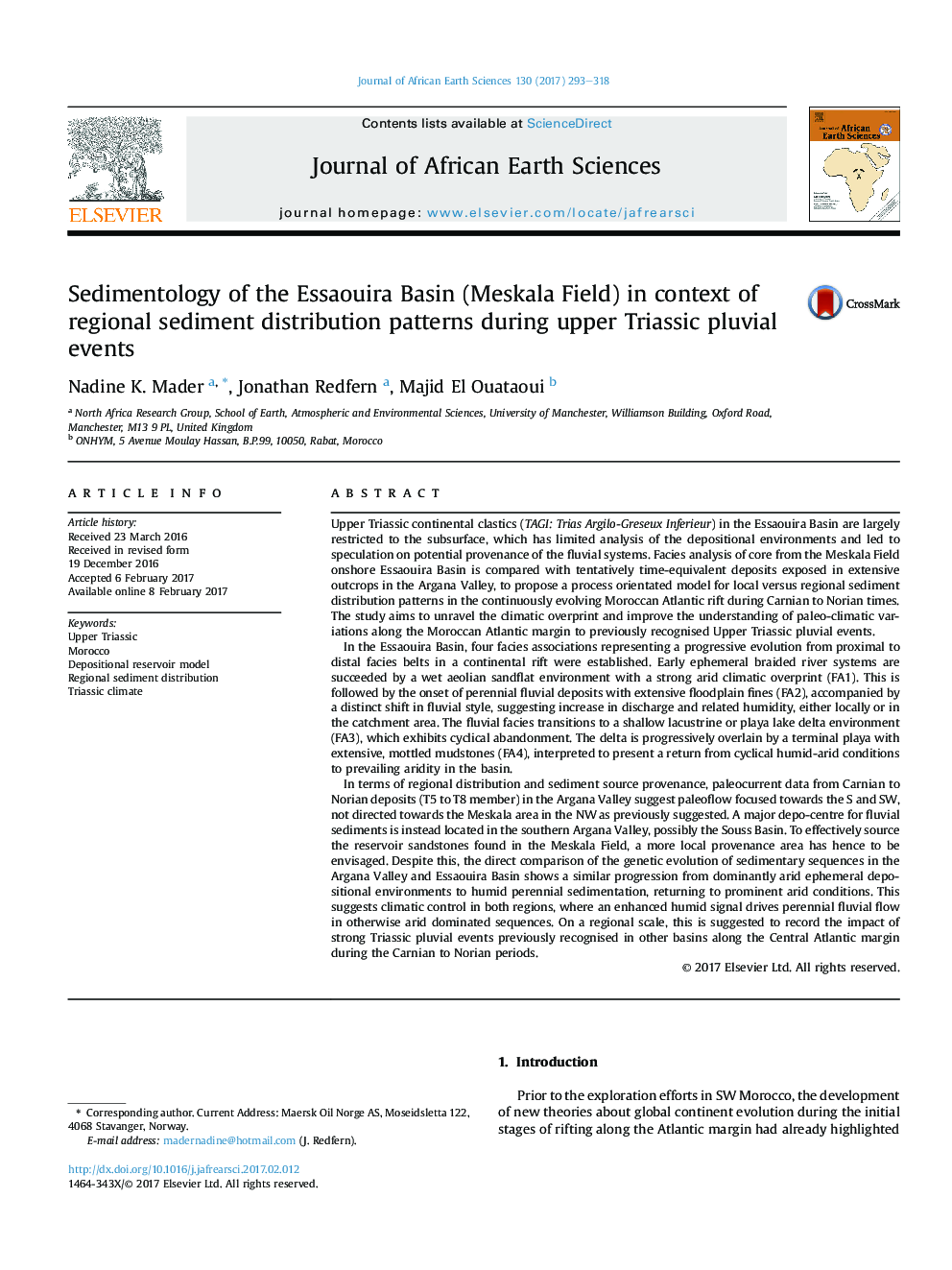| Article ID | Journal | Published Year | Pages | File Type |
|---|---|---|---|---|
| 5785478 | Journal of African Earth Sciences | 2017 | 26 Pages |
â¢This paper presents the first comprehensive depositional model for Upper Triassic sediments in the central Essaouira Basin.â¢Results of this contribution add to the understanding of regional sedimentation patterns of (Upper) Triassic deposits in SW Morocco.â¢The depositional model points towards much broader Triassic rift-basin geometries than previously expected.â¢The study provides new evidence for paleo-climatic reconstructions of the Moroccan Atlantic margin and the extend of potential Carnian or ?Norian pluvial events evident in the investigated sequences.â¢The paper further benefits from unpublished subsurface data, including detailed core and lithofacies descriptions.
Upper Triassic continental clastics (TAGI: Trias Argilo-Greseux Inferieur) in the Essaouira Basin are largely restricted to the subsurface, which has limited analysis of the depositional environments and led to speculation on potential provenance of the fluvial systems. Facies analysis of core from the Meskala Field onshore Essaouira Basin is compared with tentatively time-equivalent deposits exposed in extensive outcrops in the Argana Valley, to propose a process orientated model for local versus regional sediment distribution patterns in the continuously evolving Moroccan Atlantic rift during Carnian to Norian times. The study aims to unravel the climatic overprint and improve the understanding of paleo-climatic variations along the Moroccan Atlantic margin to previously recognised Upper Triassic pluvial events.In the Essaouira Basin, four facies associations representing a progressive evolution from proximal to distal facies belts in a continental rift were established. Early ephemeral braided river systems are succeeded by a wet aeolian sandflat environment with a strong arid climatic overprint (FA1). This is followed by the onset of perennial fluvial deposits with extensive floodplain fines (FA2), accompanied by a distinct shift in fluvial style, suggesting increase in discharge and related humidity, either locally or in the catchment area. The fluvial facies transitions to a shallow lacustrine or playa lake delta environment (FA3), which exhibits cyclical abandonment. The delta is progressively overlain by a terminal playa with extensive, mottled mudstones (FA4), interpreted to present a return from cyclical humid-arid conditions to prevailing aridity in the basin.In terms of regional distribution and sediment source provenance, paleocurrent data from Carnian to Norian deposits (T5 to T8 member) in the Argana Valley suggest paleoflow focused towards the S and SW, not directed towards the Meskala area in the NW as previously suggested. A major depo-centre for fluvial sediments is instead located in the southern Argana Valley, possibly the Souss Basin. To effectively source the reservoir sandstones found in the Meskala Field, a more local provenance area has hence to be envisaged. Despite this, the direct comparison of the genetic evolution of sedimentary sequences in the Argana Valley and Essaouira Basin shows a similar progression from dominantly arid ephemeral depositional environments to humid perennial sedimentation, returning to prominent arid conditions. This suggests climatic control in both regions, where an enhanced humid signal drives perennial fluvial flow in otherwise arid dominated sequences. On a regional scale, this is suggested to record the impact of strong Triassic pluvial events previously recognised in other basins along the Central Atlantic margin during the Carnian to Norian periods.
